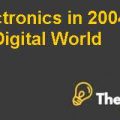Wireless Power Transfer Case Study Solution
Overview:
Wireless power transfer is one of the most ongoing engineering topic running around these days. We are now living in the technology sophisticated world in which things are modernized, man’s efforts becomes more and more minimized and time saving. Whether it is a field of engineering industry, information technology, e-commerce, digital and social media, and medical world and even in domestic environment humans are habitual of modern technology.
Technology in the field of medical science is also remarkable now a days. Progress of technology in medicine is also increasing day by day. Many diseases which were undetectable and incurable before in the past days are now treated easily and have been taken care off due to technological advancements.
The cardiac pacemaker (or artificial cardiac pacemaker) is one of the most notable technological invention in the field of biological science. Heart is the most essential organ of the human body,it performs the action of supplying blood to all parts of body by doing contraction and relaxation. This action is performed due to hearts cardiac cells i.e. they produce the action potential due to which the heart is pumping. Persons whose natural cardiac pumping is not functioning properly than those patients require the artificial cardiac pacemakers in order to make their heart pump with correct pumping rate of impulses.
The cardiac pacemaker is basically an electronic device which produces very little electrical potential at its output is called action potentials. These action potentials are the ones which are responsible for correct beating or pumping rate of heart. The artificial pace maker is inserted into the human body by surgery and placed inside the chest and close to heart.
Wireless Power Transfer Harvard Case Solution & Analysis
As the pace maker is an electronic device so it needs a power source or batteries to power itself for its functioning. It is therefore batteries are also placed with pacemaker inside the human body. But the batteries has limited power available in it. It cannot run or supply power to pace maker forever. It can run the pacemaker for a limited time as it will drain after some time due to its usage with the passage of time. So that’s why these batteries are used to charge up after some time or after it signals to be down. Then for charging up the batteries it is again required to operate human body in order to physically reach the batteries and either replace the battery with the charged ones. But it is found to be quite bothering to go through this process again and again.
Due to the progressive advent in biological science and by using the technological resources, we are now trying to solve and overcome the complication of charging the pace maker batteries wirelessly. In the domain of electrical, electronics and telecommunication world it is now possible to some extent to transfer electrical energy from one part to another wirelessly (i.e. without using any physical material of medium). Although it is not accomplished up to the great level till now meaning that the ongoing research and work is in progress for now, and only a few distance and only few magnitude of voltage and current is successfully transmitted now wirelessly.
So for charging the cardiac pacemakers batteries this concept and phenomena will remain very beneficial when its batteries are charged wirelessly and most importantly without requiring to operate.
Though it is on research level and examine level now but the ideas and concepts are nearly build and ready to implement in the near future.
In later part of the report in following, it will be discussed how to implement this and what will be the engineering and actual devices required for accomplishing this target.
Working Methodology:
Wireless charging is the phenomena in which power transmits from one point to another point without having any physical medium like wire or any conductor. Wireless charging means that charging source and designation are completely wireless to each other i.e. Power transmit in air.
Actually behind wireless charging or wireless power transmitting there is an engineering phenomena called Inductive charging or inductive power transmitting. It is done through electromagnetic field i.e. emf.
The process is done by using two induction coils, one is placed at charging source end and the second one is located at charging destination end i.e. batteries. The source end is producing AC emf and pass this emf to the source induction coil. This induction coil is responsible for transmitting this AC power emf signal. And at other end, there is another induction coil placed responsible for converting this received AC emf signal to be converted to DC by using bridge rectifier in the receiving end and to ultimately charge up the batteries.
This is basically a phenomena closely related to AC Transformer specifically in which phenomena called mutual inductance takes place. There is a primary side of transformer which is powered up by AC source and it transmits through the secondary coil where it whether steps up or steps down as according to the transformer type. The medium between primary and secondary coils of an AC transformer is called di-electric and it is basically an insulator which isolates the transformer’s primary and secondary part from each other........................
This is just a sample partial case solution. Please place the order on the website to order your own originally done case solution.












